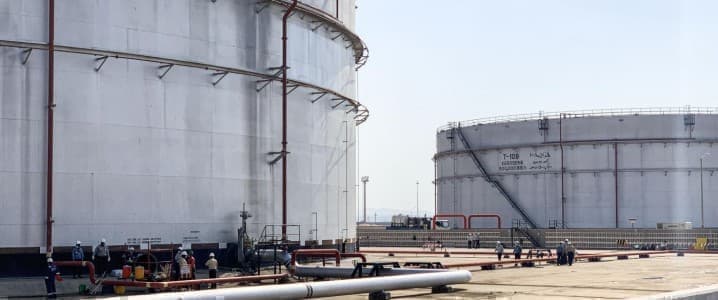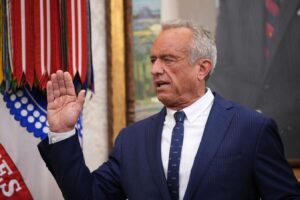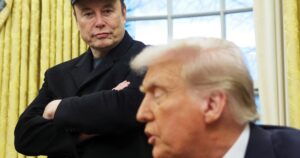https://oilprice.com/Energy/Energy-General/Aramco-Boosts-Dividends-But-it-Can-Ill-Afford-to-Do-So.html
By Simon Watkins – Mar 18, 2024, 7:00 PM CDT
- Saudi Aramco increased dividends by 30% in 2023.
- The average price per barrel of the Brent crude oil benchmark dropped just over 18% over the year.
- The highly precarious geopolitical and economic tightrope on which Saudi Arabia now finds itself means that it has no alternative but to try to keep pushing oil prices ever higher.

It is not surprising that profits in 2023 at Saudi Arabia’s flagship company Saudi Aramco were lower than in 2022. After all, the average price per barrel of the Brent crude oil benchmark dropped just over 18% over the year – from US$100.93 to US$82.49. The fact that Aramco’s profit drop was nearly 25%, rather than 18%, is also not that uprising, given standard operational variances over and above the straight drop in oil price. What may surprise many is that the company not only continues to pay a huge amount in dividends to its largely institutional and state shareholders, but also that despite a major drop in profits, these dividend payments were increased by a stunning 30%. It does not surprise OilPrice.com, though, which can trace back the real reason behind this extraordinary de facto debt burden to the birth in 2016 of the idea of floating Saudi Aramco in an initial public offering (IPO). This quickly became a desperate scramble to sell it at any cost, which has left Saudi Arabia alienated from the U.S. and in thrall to Russia, which continues to use it as a stooge in its global oil game, as analysed in full in my new book on the new global oil market order.
Back in 2016, Saudi Arabia had just lost the 2014-2016 Oil Price War, which it launched with the specific intention of destroying or permanently disabling the then-nascent U.S. shale oil sector. The Kingdom knew that the rise of this new-found U.S. resource would mark the beginning of the end for its over-inflated geopolitical and economic importance in the world, founded entirely on its status as a leading oil producer. Unfortunately for Saudi Arabia, it had reckoned without U.S. shale oil’s extraordinary ability to transform itself into a lean, mean oil machine capable of sustaining production at around a third of the price originally thought possible. It was at this point that the idea of floating Saudi Aramco was proposed. This had three theoretical advantages to it. First, it could raise a lot of money, which could be used to offset the economically disastrous effect on Saudi Arabia of the 2014-2016 Oil Price War. Second, it could boost Saudi Arabia’s reputation in the global financial markets, which would help expedite further IPOs and boost foreign investment into the country’s domestic capital markets more broadly. And third, the excess funds from the Aramco IPO and those coming from new IPOs could be used to kickstart the ‘National Transformation Program’ 2020 that sought to diversify the Kingdom’s economy away from its reliance on oil and gas exports. Very senior Saudi figures behind the idea assured other more sceptical members of the Royal Family that Saudi Aramco would have no problem in having a listing on one of the world’s major stock exchanges (the New York Stock Exchange or the London Stock Exchange being the two preferred options) plus on the local Saudi bourse. They also said that they could guarantee demand for at least 5 percent of Aramco to be sold in shares. They guaranteed as well that this would raise at least US$100 billion in much-needed funds for Saudi Arabia. This, in turn, would place a valuation on the entire company of at least US$2 trillion.
This optimism proved ill-founded, as the more international investors discovered about Saudi Aramco, the less they liked the idea of investing in it, as also analysed in full in my new book on the new global oil market order. Crucially to begin with, all the numbers relating to the company’s proven oil reserves, crude oil production capabilities, and spare capacity looked extremely suspect. There were further questions over whether Aramco – and its future shareholders – would own its own oil concessions after the IPO and whether it would make its own drilling decisions, based on the best financial reasoning. Aramco’s responses were not reassuring. It said that although the IPO would include the concessions, the actual wells “will still be owned by the government…this is the same as before, and there are no changes to that”. It then added that oil and gas production decisions were sovereign matters that would remain with the government. In practical terms, then, this meant that if Saudi Arabia decided that it was going to try again to destroy the U.S. shale oil industry as it did in 2014 by overproducing to crash the oil price then Aramco shareholders would see huge losses both in dividend payout terms and in the value of the shares.
As a result of these and other more controversial factors surrounding Saudi Arabia itself, not a single major international stock exchange would allow Saudi Aramco to list on it. Additionally, no significant institutional financial investor that was not already tied into Saudi Aramco’s IPO advisory team, wanted to buy any of its shares. It was at this point that China offered to buy the entire 5 percent stake in the company in a private offering, which would have allowed the senior Saudis who had proposed the IPO in the first place to save face. However, the idea was dismissed by other then-more-senior members of the Royal Family, although the offer has not been forgotten, and is a key reason why Saudi Arabia has grown ever closer to China since that point, as also analysed in full in my new book on the new global oil market order. Instead, it was decided to offer a range of additional incentives to potential shareholders to take up the Aramco IPO offer. One of these was a guarantee by the Saudi government that, whatever happened, it would pay a US$75 billion dividend payment in 2020, split equally into payments of US$18.75 billion every quarter. Even with this, though, Saudi Arabia could still only manage to sell 1.5 percent of Aramco, not the 5 percent originally intended, and the rest of the company was left with a crushing dividend repayment burden, which has risen with the addition of extra performance-linked dividends. These are designed to target 50-70 percent of annual free cash flow, net of the base dividend, and other amounts including external investments, according to Aramco’s chief executive officer, Amin Nasser. For 2023, the total dividend was $97.8 billion.
Saudi Arabia’s move closer to China during the debacle of the Aramco IPO was echoed in its closer relationship with Russia as well, both resulting from its alienation from the U.S. following its failed 2014-2016 Oil Price War. In Russia’s case, Saudi Arabia had little choice but to accept it into the broader iteration of OPEC that became ‘OPEC+’, as the Kingdom’s credibility in the oil markets had been destroyed after the failure of the Oil Price War. It was the commitment of Russia to OPEC’s future oil production cuts after 2016 that gave them any market impact. However, Russia has been quick to use Saudi Arabia for its own ends, encouraging it to persuade its fellow original OPEC members to cut their oil output while quietly selling its own oil at a lower price, but still above the price caps imposed after its invasion of Ukraine in 2022.
The highly precarious geopolitical and economic tightrope on which Saudi Arabia now finds itself means that it has no alternative but to try to keep pushing oil prices ever higher. Given the economic and political ramifications of this for the U.S., as also analysed in full in my new book on the new global oil market order, this means a collision course with the White House and its allies, which in turn looks potentially very dangerous for Saudi Aramco. Washington already has the mechanism to destroy Aramco in its current form in place, in the shape of the ‘No Oil Producing and Exporting Cartels’ (NOPEC) bill. This legislation would open the way for sovereign governments to be sued for predatory pricing and any failure to comply with the U.S.’s antitrust laws. OPEC is a de facto cartel, Saudi Arabia is its de facto leader, and Saudi Aramco is Saudi Arabia’s key oil company. The enactment of NOPEC would mean that trading in all Saudi Aramco’s products – including oil – would be subject to the antitrust legislation, meaning the prohibition of sales in U.S. dollars. It would also mean the eventual break-up of Aramco into smaller constituent companies that are not capable of influencing the oil price. Adding to the unwillingness of the U.S. and its allies to tolerate further rises in oil prices is that several major European countries – including Germany – have been investing substantially more in non-fossil technology, which has been seen in a notable decline in their OPEC+ dependency.
By Simon Watkins for Oilprice.com
More Top Reads From Oilprice.com:
- This Could Be A Gamechanger For Natural Gas In Europe
- The U.S. Is Betting Big on Small Nuclear Reactors
- Shell Focuses on Investor Returns as Climate Goals Take a Backseat
![]()
Simon Watkins
Simon Watkins is a former senior FX trader and salesman, financial journalist, and best-selling author. He was Head of Forex Institutional Sales and Trading for…















